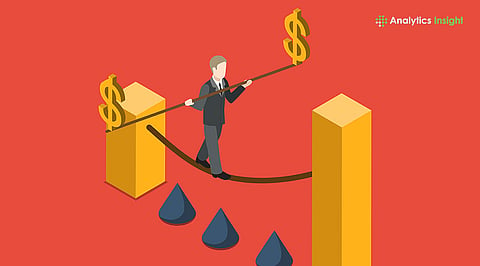

Overview:
The equity risk premium measures extra returns from stocks over risk-free assets.
A higher equity risk premium shows stronger reward expectations for taking risk.
The equity risk premium helps assess market confidence and guide investments.
The equity risk premium (ERP) is an important concept in finance. It shows how much extra return investing in the stock market gives compared to a risk-free investment. This additional return exists because stocks are riskier than safer investments, such as government bonds. Investors expect to be rewarded for taking that extra risk.
The equity risk premium is the extra return an investor expects from stocks relative to risk-free investments. A risk-free investment, for example, is a government bond with a fixed return and very low risk. The ERP is a way to quantify the typical reward for the risk and volatility associated with investing in stocks.
Formula:
ERP = Expected Return on Stocks - Risk-Free Rate
For example, if the stock market is expected to give a 10% return and a government bond gives 3% the ERP is 7%. This 7% shows the extra gain an investor might earn for taking the higher risk of stocks.
Also Read: Why BlackRock’s Bitcoin ETP Matters for Crypto and Investors
Investors use the ERP to check if investing in stocks is worth the risk. A higher ERP indicates that stocks are expected to deliver higher returns than risk-free assets. This makes stocks more attractive when the potential reward is high. A lower ERP may warrant caution, as the additional return does not justify the risk.
The ERP helps investors decide how to divide money between stocks and safer investments. If the ERP is high, more money might be allocated to stocks. If it is low, more money might be kept in bonds or other safe options. This balance helps manage risk while seeking better returns.
The ERP can also give clues about how investors feel about the stock market. When the ERP goes down, investors are less confident about future stock returns. This could happen if the economy seems uncertain or if stocks are already costly.
An investor faces two choices:
Option A: A government bond with a 3% return
Option B: A stock expected to give a 10% return
The ERP for the stock is 7% (10% – 3%). This means the investor expects to earn 7% more for taking the higher risk of investing in the stock. The higher return is the incentive to choose the riskier option.
Also Read: Gold and Silver Prices Decline in Dubai as Investors Take Profits
The equity risk premium has not remained constant over time. In years like 1987 and 2000, the ERP was almost zero. Significant stock market declines followed these periods. The ERP is low again, which worries some analysts about the possibility of future market corrections.
The equity risk premium provides some justification for the rewards of investing in stocks to the extent that risks are involved. Armed with a basic understanding of ERP, an investor can rationally determine whether stocks are worth the degree of risk and plan an investment strategy accordingly. ERP is informative for investors because it conveys an understanding of the additional return an investor expects and guides how to allocate funds for investment purposes.
1. What does the equity risk premium mean in simple terms?
It shows how much extra return stocks give compared to risk-free investments like government bonds.
2. How is the equity risk premium calculated?
It is found by subtracting the risk-free rate from the expected return on stocks.
3. Why is the equity risk premium important for investors?
It helps investors see if the extra return from stocks is worth the added risk they carry.
4. How does a high or low ERP affect investment decisions?
A high ERP makes stocks more attractive, while a low ERP may push investors toward safer options.
5. What does a falling equity risk premium indicate about the market?
It may signal that investors expect lower future returns or that stocks are becoming overvalued.
